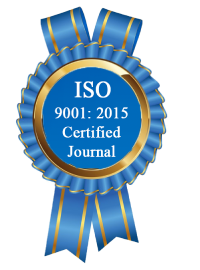| All | Since 2020 | |
| Citation | 172 | 110 |
| h-index | 7 | 5 |
| i10-index | 1 | 0 |
WJERT Citation 
Login
News & Updation
Abstract
PRODUCTION AND OPTIMIZATION OF CITRIC ACIDS FROM CASSAVA PEELS USING ASPERGILLUS NIGER
*Ajala A. S., Olaniyan S. A., Fasonyin O. T. and Adeoye A. O.
ABSTRACT
In this study, cassava peels were hydrolyzed using Hydrochloric acid (HCl) and fermented with Aspergillus niger (LAU111) to get citric acid. The optimization of the citric acid was carried out using Central Composite Experimental Design (CCED). Design Expert 6.8 version was used as software. The variables used for the optimization include: A- inoculum concentration (7-11 %), B- fermentation time (1-4 days), C- temperature (23-39 o C) and D-ethanol concentration (0-4 %),. The optimization results showed that the linear model had good fit with experimental data. Analysis of variance results showed that the model had R2, adjusted R2 and predicted R2 value of 0.8733, 0.8521 and 0.8280, respectively. F-value of the model was 41.34 and this was significant because the model had the probability chance of 0.0001 of noise. Adequate precision value was as high as 24.37; this was greater than 4 which is the minimum required value. The lowest and highest values of citric acid recorded were 2.5 and 7.6 g/l. The optimum value of citric acid recorded was obtainable through the combination factors of inoculum concentration and fermentation time. Therefore, cassava peels have a good potential to produce enough citric acid needed for local consumption if properly harnessed. This will reduce the cost of importation into the country and boost local economy.
[Full Text Article] [Download Certificate]
